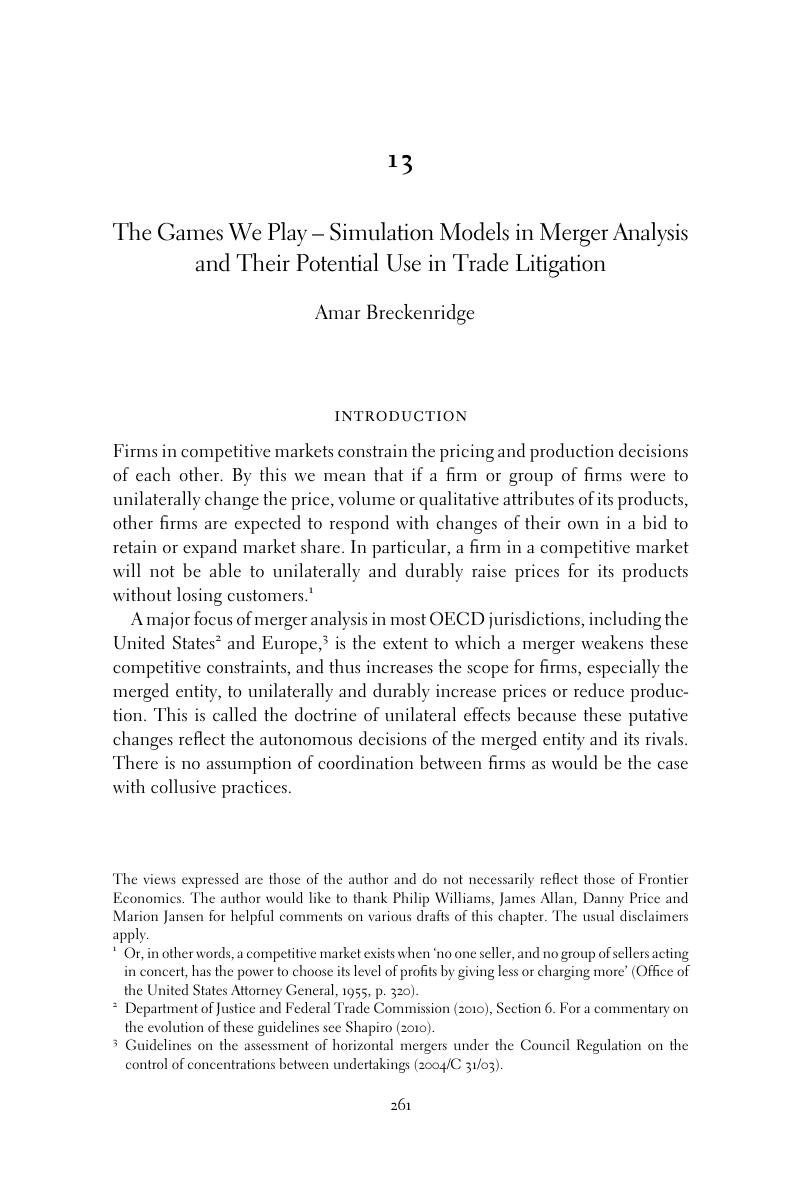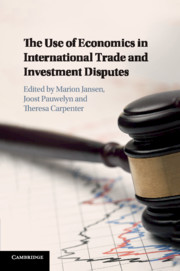Book contents
- The Use of Economics in International Trade and Investment Disputes
- The Use of Economics in International Trade and Investment Disputes
- Copyright page
- Contents
- Figures and Tables
- Contributors
- Acknowledgements
- 1 Introduction
- Part I The Use of Economics in International Trade and Investment Disputes: A Practitioner’s View
- Part II The Use of Economics in International Trade Disputes: Economic Versus Legal Thinking
- 8 What to do if Economic Insights are Disputed: On the Challenge to Deal with Competing and Evolving Theories or Empirics in International Trade Disputes
- 9 Lost in Translation: Communication and Interpretation Challenges Related to Economic Evidence in Trade Disputes
- 10 Land Rich and Cash Poor? The Reluctance of the WTO Dispute Settlement System to Entertain Economics Expertise: An Institutional Analysis
- 11 The Economics of Actionable Subsidy Disputes
- 12 In Search of a “Genuine and Substantial” Cause: The Analysis of Causation in Serious Prejudice Claims
- 13 The Games We Play – Simulation Models in Merger Analysis and Their Potential Use in Trade Litigation
- Part III The Use of Economics in International Investment Disputes: Liability and Damages
- Conclusion
- Appendix to the Conclusion
- Index
- References
13 - The Games We Play – Simulation Models in Merger Analysis and Their Potential Use in Trade Litigation
from Part II - The Use of Economics in International Trade Disputes: Economic Versus Legal Thinking
Published online by Cambridge University Press: 13 April 2017
- The Use of Economics in International Trade and Investment Disputes
- The Use of Economics in International Trade and Investment Disputes
- Copyright page
- Contents
- Figures and Tables
- Contributors
- Acknowledgements
- 1 Introduction
- Part I The Use of Economics in International Trade and Investment Disputes: A Practitioner’s View
- Part II The Use of Economics in International Trade Disputes: Economic Versus Legal Thinking
- 8 What to do if Economic Insights are Disputed: On the Challenge to Deal with Competing and Evolving Theories or Empirics in International Trade Disputes
- 9 Lost in Translation: Communication and Interpretation Challenges Related to Economic Evidence in Trade Disputes
- 10 Land Rich and Cash Poor? The Reluctance of the WTO Dispute Settlement System to Entertain Economics Expertise: An Institutional Analysis
- 11 The Economics of Actionable Subsidy Disputes
- 12 In Search of a “Genuine and Substantial” Cause: The Analysis of Causation in Serious Prejudice Claims
- 13 The Games We Play – Simulation Models in Merger Analysis and Their Potential Use in Trade Litigation
- Part III The Use of Economics in International Investment Disputes: Liability and Damages
- Conclusion
- Appendix to the Conclusion
- Index
- References
Summary

- Type
- Chapter
- Information
- Publisher: Cambridge University PressPrint publication year: 2017
References
- 1
- Cited by



